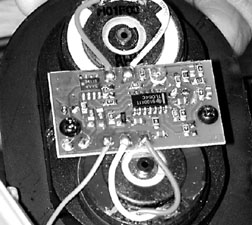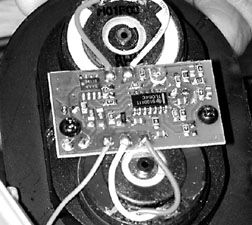
Although GPS systems are the glamour boxes of the avionics world, in some ways, the most impressive advances have been made in the mundane field of audio panels.
As we reported in the July 1999 issue, new audio panels from Garmin and PS Engineering have advanced the state of cockpit sound far beyond the simple switching networks common a decade ago. But all the money in the world spent on an audio panel isn’t worth squat without a good pair of headsets.
Many pilots continue to shortchange themselves by plugging an ancient David Clark or an el-cheapo passive headset into a multi-thousand dollar audio network. It makes no sense.
Thats one reason active noise canceling headsets have become commonplace yet they are far from standard equipment. Why? We suspect cost is the primary chiller. Youre still looking at nearly $500 for a decent pair of ANRs. Provide each seat with one and say goodbye to a couple of grand.
There Oughta Be a Way
But a company down in Texas who has been at the ANR business for quite some time has achieved some success in selling low-cost ANR with decent performance.
Headsets, Inc. of Amarillo, Texas offers an inexpensive kit to transform most popular passive headsets to ANR units. How inexpensive? Price some of the popular ANR headsets currently on the market from Bose, Sennheiser, Telex and such and you’ll find that the Headsets kit, at $169, is less than a third of the price of mid-range ANR.
In short, it delivers more than a third the performance but there’s still an additional price to pay: You gotta put the thing together yourself. In a nutshell, the Headsets kit will convert most standard passive headsets to acceptable if not exceptional ANR.
Chances are, you may have already upgraded the pilot seat to an ANR headset but you still have at least one pair of inexpensive headsets for the right or rear seat passengers. The kit is cheap enough to allow some experimentation and the payoff may very we’ll be a surprisingly good ANR headset.
But consider this: Installing this kit is crossing the great divide. Once you tear into a set of David Clarks or Telexs, any factory support may evaporate. Aftermarket modifications such as these are not endorsed by most manufacturers and will void any remaining factory warranty. The David Clark Company has always had generous warranty philosophy. Weve seen older DC models, abused, broken and requiring numerous new components fixed and returned by the company at no cost to the customer. In the aviation biz, that kind of product support is rare.
Second, although the kits instructions are complete, converting a headset requires moderate skills with soldering iron, wiring cutters and strippers. Not a huge deal, but not trivial, either. If youre a busy owner or you don’t like to tinker, pass on the kit.
Insert Tab A
Headsets, Inc. assumes anyone can do this mod and provides explicit-and we do mean explicit instructions. For example, youre warned to remove the earseals from each earcup and put them out of the way to avoid burning them with a hot soldering iron. We think we could have figured that out.
Any wannabe avionics techs may jump at the chance of moding a headset for ANR. If you get half way through the mod and throw it against the wall, we guarantee that you’ll never complain about high labor prices charged by a professional bench tech.
The kit sent for a standard set of vintage DC H10-30 consists of a zip lock bag filled with solder, 28-gauge wire, shrink wrap, tie wraps, adhesive and numerous other important install-related materials.
The bulk of the ANR equipment is power cable, two ANR speaker modules, crossover cable and, of course, a battery case for powering the ANR circuitry.
You provide a low wattage soldering iron, drill and bits, wire cutters, damp sponge for solder control and plenty of clean and well-lighted work space.
The existing original left and right cup speakers and foam are removed. It gets a little scary here, as you must drill 1/4-inch hole into the plastic casing of the earcup to accommodate power cabling. Be careful not to crack the cup and drill through any remaining hardware on the inside or you may end up trashing the entire headset. What follows is mostly soldering and interpreting a schematic diagram for proper audio and power interface.
The instructions warn, review the wiring color diagram carefully and proceed slowly. Thats a mouthful to say the least. This is where you need some degree of soldering skill, as the wires need to be tinned, a process where solder is melted into the wire. Its a snap if you know how but an opportunity to make a mess if you don’t. Practice on scrap wire first.
Follow the chart and connect everything up. Small, electret microphones for noise sampling-the critical element in ANR-are dropped into each earcup. The guts of the ANR itself reside on a couple of tiny circuit boards that also fit into the earcup. If this sounds a little like dentistry, it is. It should give you an appreciation of why your avionics shop charts $50 an hour for bench time. Without rushing, we would say you could mod a headset using this kit in about four to six hours.
Moment of Truth
With everything wired up and the headset neatly closed back up, the moment of truth arrived. We plugged in the power supply, installed a 9-volt battery and flipped the switch.
Instant success? Not so quick there, Jackson. One side worked fine, the other was dead. Knowing that most new avionics glitches are the result of bad wiring-yup, human error-we popped the earcup to have a look at our work.
We were sure there was a bad solder connection or pinched wire inside the casing. But no, everything looked ship shape. (Well take some credit here for being professional bench techs; we do know how to wire stuff.)A call to tech support at the manufacturer revealed that one of the boards or mics was probably faulty. This was beyond our ability to repair-or even troubleshoot-so we boxed the headset up and shipped it to Amarillo for evaluation.
Four days later, we got the repaired headset back for a try out. If there’s a not-so-subtle lesson here, its this: You could spend most of a day doing this and have the thing not work, either because you screwed up or the components were faulty. Either way, you face the hassle and delay of shipping the headset out to have it professionally repaired. There’s no charge for this but how much is your time worth? (For what its worth, the headset failed a second time as this article was going to press.)
There’s a better alternative. For an extra $50, Headsets, Inc. will do the mod for you, test the headset and get it right from the beginning. In our view, thats a helluva bargain since the frustration of several hours of labor to produce something that doesnt work is easily worth $50. Headsets has a 30-day money-back guarantee, less installation.
Of course, return the stuff and youre left with the parts and pieces of the old headset which you are on your own to re-install. Like we said, the price of admission here is the cost of the kit and, probably, the sacrifice of one headset.
Options
As ANR goes, the Headsets conversion has the typical option of a panel-mounted power jack for powering the headset via aircraft power. It costs $49 and we’ll worth it if the headset will remain in one aircraft.
Incidentally, the portable battery pack holds a 9-volt alkaline battery and advertised battery life is 20 to 25 hours. The company also warns that prolonged use of the ANR system-three-plus hours-below 20 degrees F will result in moisture condensation within the headsets resulting in temporary malfunction.
Most cockpits are heated, so that shouldnt be a problem but these arent cold-weather devices. A flight helmet ANR kit sells for $179 and additional battery cases are $19. They even sell all of the pieces making up the ANR kit separately, in case you trash any component during installation. Thats also good for fix-it-yourself owners.
Performance
So how do the Headsets Inc. ANRs perform? Weve found that ANR performance is a subjective quality. Some pilots prefer one model over another for reasons that arent possible to quantify. We tried the modified H10-30s in a near-mach speed environment of a foreign fighter jet, an L-39 Albatross that happens to be based on the field and needed an avionics test flight.
This was a good test for vibration and noise. Before taxi clearance, the powered up ANR circuitry came alive with an electronic click from each earcup. Yup, they sound like ANR. No interference due to impedance mismatch as is sometime expected from onboard systems.
Still heard was the turbine whine and everything else youd want to hear. They kept ANRing through the jets shattering takeoff noise and held up against some head bangs on the canopy.
In short, the units sounded as good and did a better job of noise canceling than our older set of Sennheiser HMEC200s. Weve also flown the LightSPEED 20Ks and Boses Headset X. In our view, the modified H10-30s have credible if not exceptional ANR performance.
Theyre certainly not up to Bose standards, at least in perceived total noise canceling capability nor are they as comfortable as either the Bose or the LightSPEEDs. But they cost a fraction as much, so the value relationship is about equivalent, in our view.
One good thing: The David Clark H10-30s were designed as a passive headset and they have better passive attenuation than a purely ANR headset will with the circuitry disabled or turned off. You lose much of that by removing the stock foam but passive attenuation seems to remain somewhat effective.
Recommendation: These are a good, inexpensive solution for the backseat or right side, which may not be occupied much and only occasional needs a set of headsets.
As a primary wear-it-all-the-time unit, were not convinced its the best choice. There are a lot of purpose-built ANR headsets on the market and many may beat the H10-30 in comfort. If you do opt for the Headsets mod, save yourself the hassle and have the company do it for you, unless you really like building stuff and are prepared for the frustration of doing your own troubleshooting or the delay of factory repairs.
Contact- Headsets, Inc.; 2320 Lakeview Drive; Amarillo, Texas 79109; 800-876-3374; www.headsetsinc.com.
Also With This Article
Click here to view the Checklist.
by Larry Anglisano
Avionics contributor Larry Anglisano is a consultant and test pilot at Exxel Avionics in Hartford, Connecticut.





